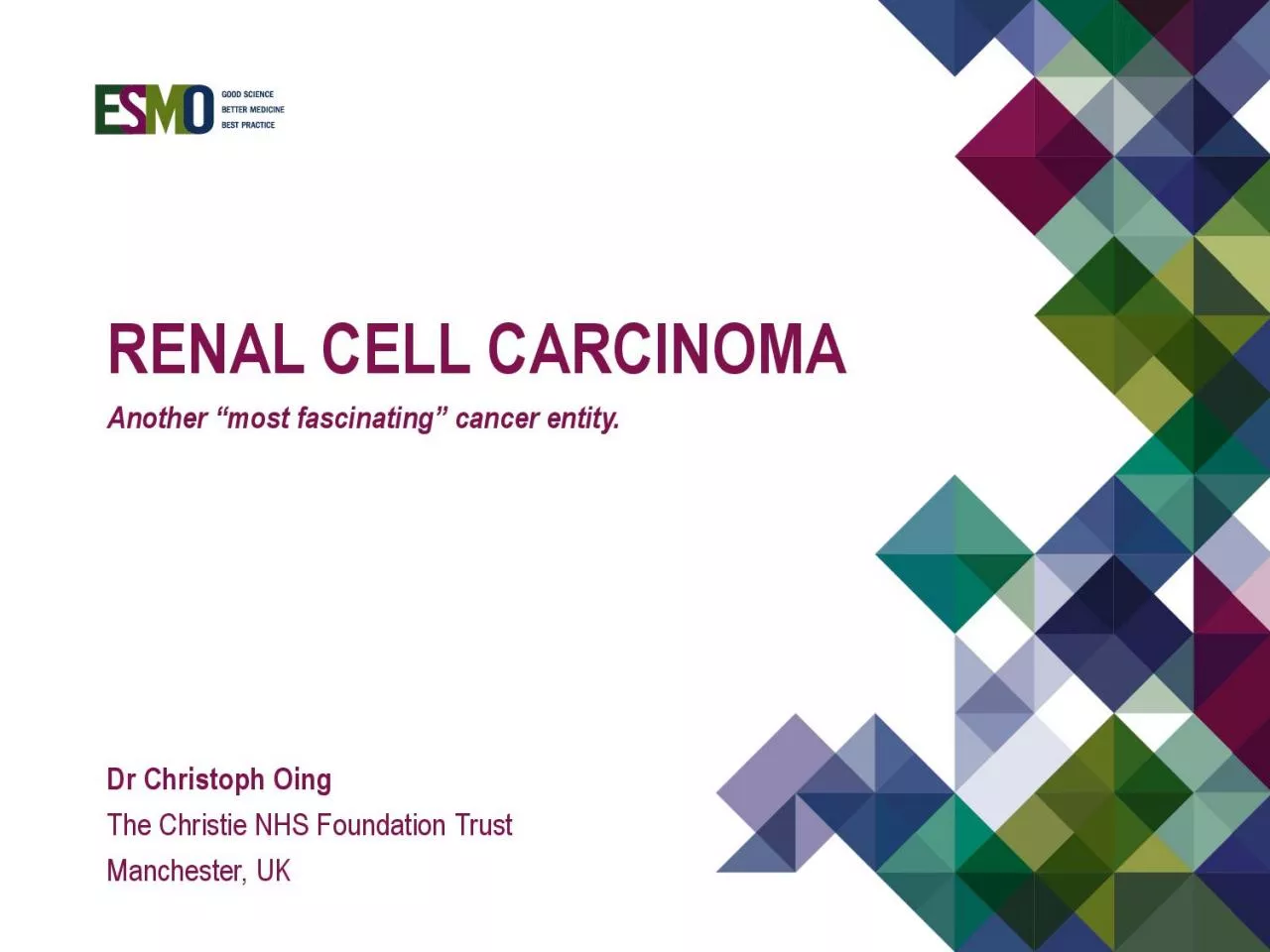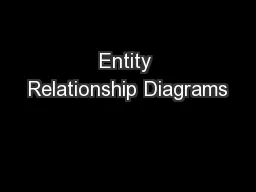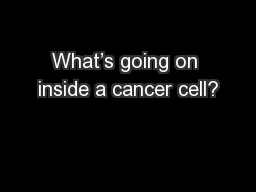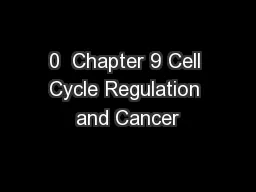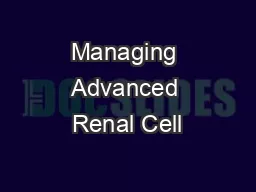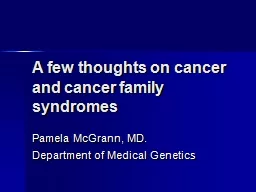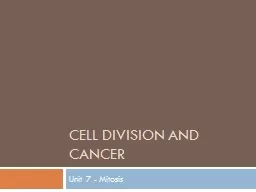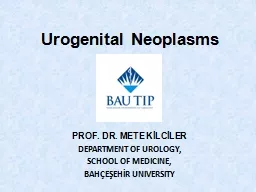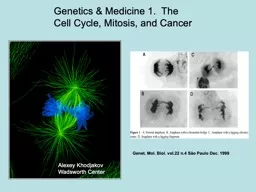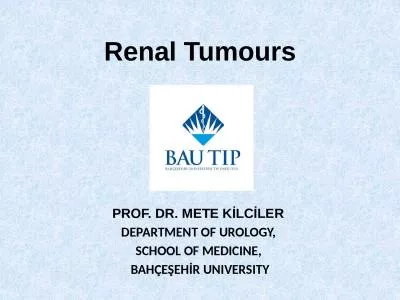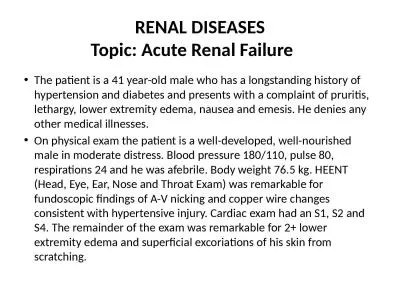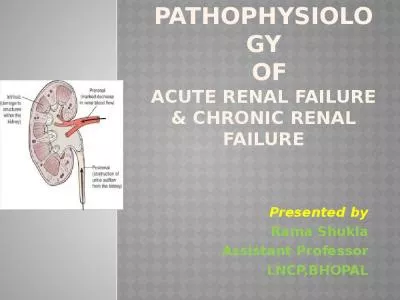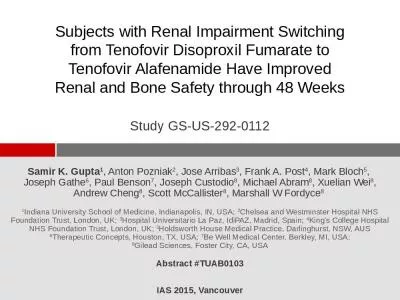PDF-RENAL CELL CARCINOMAAnother 147most fascinating148 cancer entity
Author : lydia | Published Date : 2022-08-20
CONFLICT OF INTEREST DISCLOSURE Christoph OingPersonal financial interestsHonoraria speaker activity Medac2018 IPSEN 2017Institutional financial interestsNoneNonfinancial
Presentation Embed Code
Download Presentation
Download Presentation The PPT/PDF document "RENAL CELL CARCINOMAAnother 147most fasc..." is the property of its rightful owner. Permission is granted to download and print the materials on this website for personal, non-commercial use only, and to display it on your personal computer provided you do not modify the materials and that you retain all copyright notices contained in the materials. By downloading content from our website, you accept the terms of this agreement.
RENAL CELL CARCINOMAAnother 147most fascinating148 cancer entity: Transcript
Download Rules Of Document
"RENAL CELL CARCINOMAAnother 147most fascinating148 cancer entity"The content belongs to its owner. You may download and print it for personal use, without modification, and keep all copyright notices. By downloading, you agree to these terms.
Related Documents

